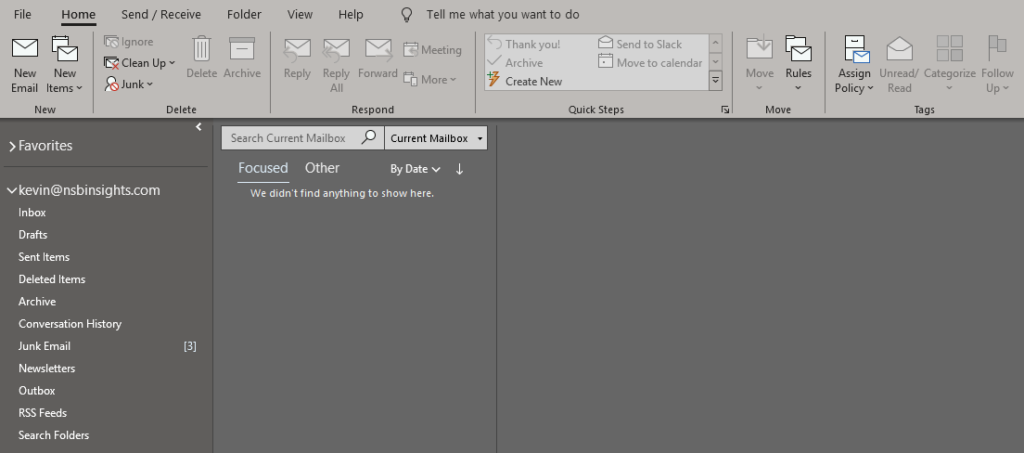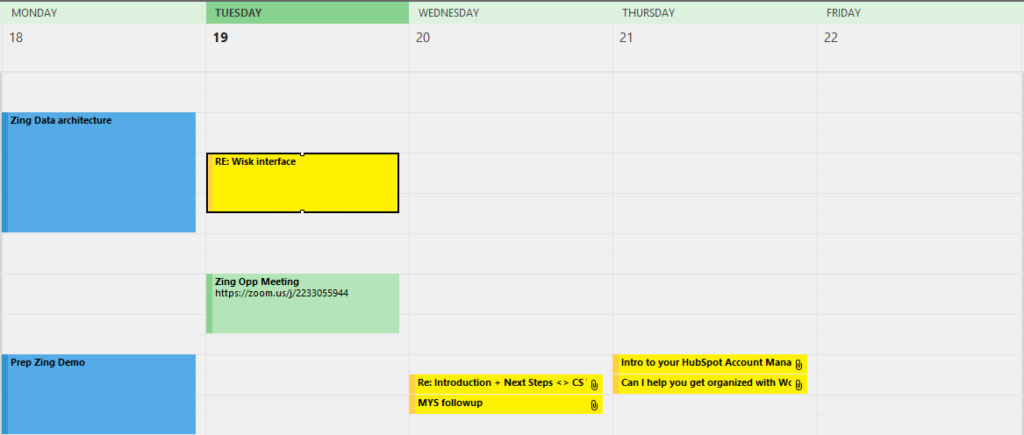There are many different types and styles of meetings but they all serve one single purpose: focused communication.
Unfortunately, every type and style of meeting loses either “focus” or “communication” (or both) at least 30% of the time. Most struggle to keep it from going off the rails 50% of the time. That’s why meetings in general fail, are incomplete, often boring, and occasionally totally disruptive to an otherwise highly productive day.
I’m not talking about conferences and large events here; there’s an entire industry that covers those. We’re talking about the most common meetings in office settings:
- “Info dump” to prevent cross-departmental silos and get everyone on the same page
- Project meetings (this includes agile and scrums)
- Client meetings (Sales/PR/Customer Support)
- Team Meetings (separate from “project meetings”, these are usually about resource allocations across multiple projects)
- 1:1 or boss:team “reviews” or “touch bases”
- Conferences and Events (Not going into these here as there’s a whole industry around this)
Main Reasons Meetings Lose Focus or Fail in Communication:
- Time: The length of the meeting and/or the start time
- Investment: Lack of preparation, no key topic(s), the meeting is set at a regular recurring time but not needed; there’s no purpose for this time
- No focus to begin with: No agenda, no key topic(s), no prep done, no expectations, or everyone starts while looking at their phones, laptop, email, etc.
- Poor communication: Going into tangents, info that is irrelevant for the people present, info that could be conveyed by a checklist or some other quick report
- Low energy: To start/timing, using up the allocated time just to fill it even after all the needed communication has finished, or everyone arrives tired
- Disruptions in the meeting: A/V or tech issues, late arrivals, or people “stepping out”
Reviewing responses from multiple surveys, several core recurring problems stand out and all have fairly simple solutions.
Time:
Start time is a crucial factor in meetings. How often do your meetings actually start on time? Not starting on time creates a traffic jam of cascading effects, from causing people to be late for other meetings to disruptions or having to “catch up” late arrivals whose input is critical. If the meeting starts on time, it will usually end early.
Picking the right start time is just as important. You generally don’t want to set a meeting as the very first thing of the day. Many people will be late and most will show up mentally unprepared and unfocused. This sets a low level of anxiety in the room right at the start.
Immediately after lunch can also be problematic. Most people can arrive to it on time but basic biology and digestion makes people bleary and lose focus quickly.
If you do need to have a meeting as the first thing each day or immediately after lunch, add some physicality to start. A lesson from direct sales teams which have “first thing” meetings; they use these as motivational cheering sessions to get them warmed up for a sales day. Adding a quick stretch, breathing exercise, and/or ice-breaker/game-like component as the first 1-2 minutes can help wake people up and get them focused. These same techniques can help overcome post-lunch bleariness.
Start meetings on time, no matter what and hold a hard end time. Establishing this trend will be difficult, but the result will always be far more focused meetings. Don’t go back to “catch people up”.
Even if the meeting is highly productive and there are more questions or needed communication, end on time. It is far better to have a productive meeting that needs more follow up than to have one that causes a disruption in the rest of the day. Record your meetings if the info is necessary for people who aren’t there, show up late, or have to leave early. I recommend recording them anyway, for an archive of info and as a way to handle the follow up efficiently.
Preparation:
Preparation is critical, and this doesn’t mean just whoever is leading the meeting. Whoever is leading the meeting does need to have at least two things walking into the meeting, often better completed long before the meeting occurs:
- Agenda and/or key topic(s)
- Expectations
If there’s a reason to meet, spell it out. What’s the purpose? What goal is to be achieved by the end of the meeting? If the topic(s) and/or goal(s) can’t be identified well before meeting, there’s zero purpose in even having a meeting except to waste time. Spelling out the reason for the meeting and expectations for the results of the meeting ahead of time can also help clarify who should be in the room. Most of the time, not everyone invited should show up. Sometimes, a better delegate can be sent instead. Someone with zero input (and for whom the info is irrelevant) doesn’t need to be there at all. Preparation of a clear agenda and expectations helps everyone identify who really needs to be present.
The leader of the meeting must check A/V and tech to be used ahead of time with enough time to make changes. No A/V or tech? Check the meeting room for appropriate seating, temperature, no loud noises, etc. These are all things that can derail a meeting from even happening.
During the meeting, the leader needs to make sure that any discussions, Q&A, etc. don’t get off topic or into the weeds and lose the focus of the rest of the attendees. Make a note of any point where a deeper discussion between a smaller subset of attendees needs to happen, roll that into the meeting follow up, and get everyone back on track.
Attendees need to also be prepared. They need to read the agenda ahead of time and make sure they have all relevant materials, info, or questions with them when walking into the meeting.
Investment:
The attendees need to be ready to participate, not just sit in the room and half-listen to others drone on. If they are not going to participate and actively receive information, they don’t need to be there. This includes turning off phones, shutting down chat/collaboration tools, closing email, and not doing other work on a laptop while the meeting is going on. If they have to step out mid-way, then the meeting is poorly scheduled, too long, or they don’t really need to be there in the first place.
Attendees all need to participate, even if that participation is just active listening. The purpose of a meeting is to make sure information is being communicated effectively, which means participants learning info they can’t easily get elsewhere, with some Q&A for clarification. Having people’s attention is the core purpose of the meeting, so starting with and keeping that attention is key. This leads us to the last main point:
Meetings involve skills; skills need training:
Too often, all the bad habits of meetings are learned traits. These are not taught or trained, but learned by most of us who first attended meetings as lower-level personnel and never got training in meeting management, public speaking, or even “active listening”. We learned from others who learned from others, all in a bad copy of a copy cascade, and none of whom ever had appropriate training. The result of a lack of training is always inefficiency and meetings falling into that 30-50% waste statistic.
Meeting Management:
Specialized training exists for “scrum masters” and most other types of meeting leaders, but too few companies invest in this training unless really pressed to do so. Take a little time to get your meeting leaders trained. Most core meeting management techniques can be trained in a couple of hours with some backup materials, but require an ongoing participatory training, which means support and feedback until the skills fully develop.
Skills involved include: building a core agenda, keeping participants focused, and having a clear follow up.
Public Speaking:
A majority of people feel uncomfortable speaking in public, especially as the size of the group and anonymity of the attendees grows. Yet this is a skill that is fairly easily learned. Toastmasters has been around for a long time to help people learn the specific skills of presentation and to make presenting in public comfortable. Find a local group and join. Employers: encourage your employees to participate and help them by making sure they have the work-time to participate.
Active Listening:
It may sound a bit hippie-dippy or “new agey”, but active listening is a skill. It involves: bringing your full focus to whatever information is being communicated, techniques of short-hand note taking, listening completely without interruption, asking the right questions for clarification, and actively participating in a conversation. This usually also means shutting up (both physically and keeping internal side-thoughts from stealing your focus).
Now for the confession: do I use all these skills and keep all my meetings fully effective? Absolutely not. I’ve been the main reason some meetings went off the rails, but when I take just a little time ahead and truly focus before going into a meeting, it is almost always a success.
It’s the new year, so the time for resolutions; realistic ones that I can keep. Mine is to always do the prep for meetings, whether I’m leading them or just participating. Will you make the same commitment?
If you or your team would like assistance with meeting skills training, please Contact Us. No matter what, add it as a business resolution to “do meetings better”.



